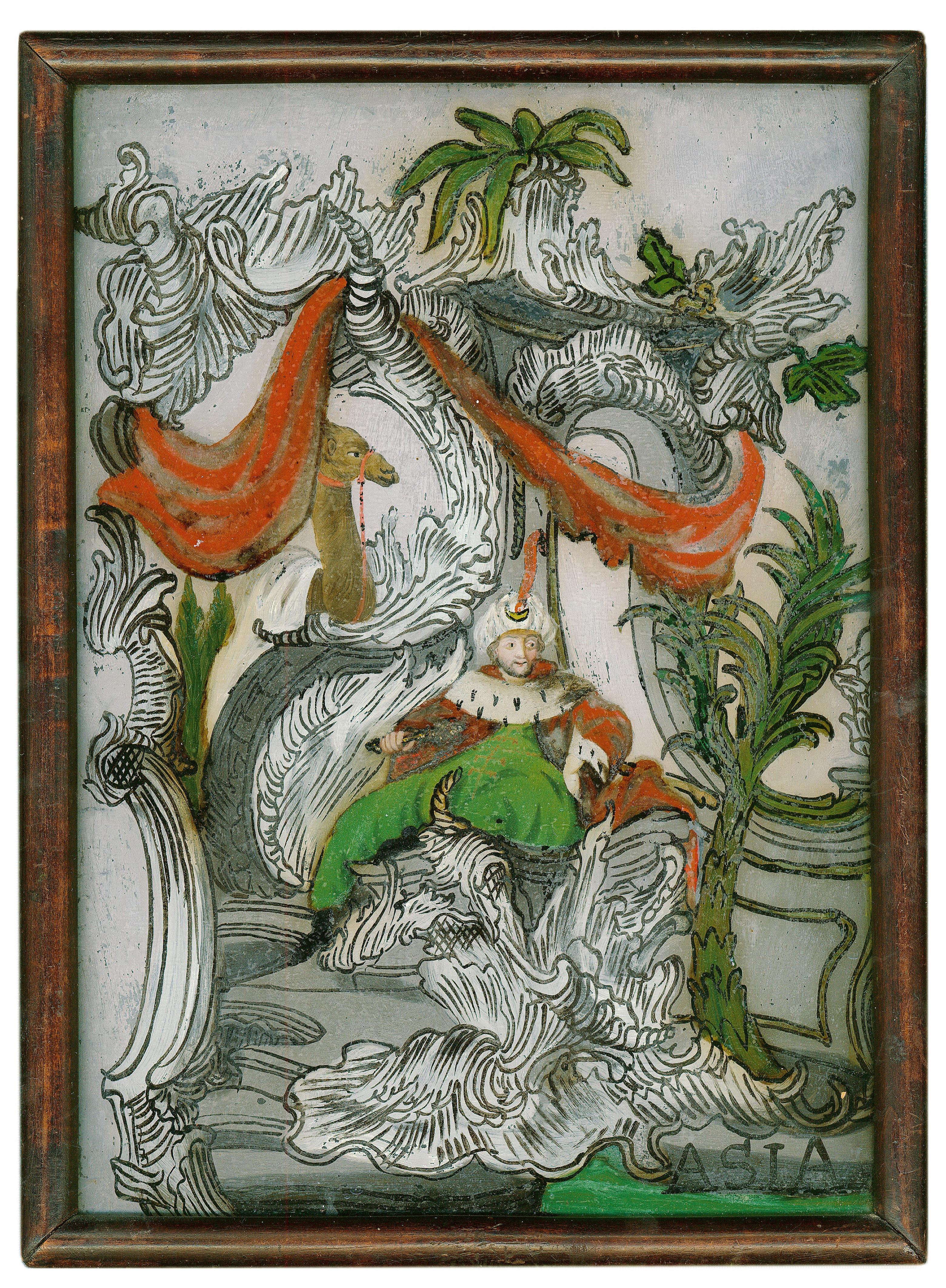Allegory of Asia
Master of the Rocaille, Tyrol, second half 18th C.
Glass panel painted on reverse in opaque and transparent pigments against a black stained softwood ground. With retouches. Ebonised wood frame, H 25.8, W 19.1 cm.
In this work, the as yet unidentified reverse glass painter followed in a mirror image a sheet by the Augsburg engraver and publisher Johann Georg Hertel the Elder (1700 - 1775) after a design by Georg Sigmund Rösch, of whom only his date of death - 1766 - is known. Rösch was active in Augsburg and Munich as a painter, draughtsman and engraver, but was also valet to Duke Clemens Franz of Bavaria. He not only collaborated with Hertel, but also worked with Baumgartner and engraved designs by François de Cuvilliés the Elder. The sheet has undergone a remarkable process of stylisation in the reverse glass version. The Master of the Rocaille has reduced the highly contrasting, layered background to a series of lively, black contoured rocailles that evoke the feeling of a drawing. He focuses on the central figure of the king, his finely painted features and his attribute, a camel's head.
In comparison to other Tyrolean reverse glass painters, it is interesting to note that the Master of the Rocaille only created secular depictions such as allegories, as opposed to the primarily religious motifs popular at the time. His notname is based on his particular penchant for large rocaille scroll decorations carried out in eglomisé technique using gold leaf. He is thought to have been active in the second half of the 18th century in the surroundings of Innsbruck – Hall and Tyrol.
Provenance
Art market, Kufstein.
Literature
Illus. in Steiner, Verborgene Schätze – Tiroler Hinterglasmalerei 1550 - 1850, Brixen 2009, illus. 40.
Exhibitions
2005 - 2006 "Eleganz in Glanz", Barockmuseum Salzburg.
2009 - 2010 Diözesanmuseum Hofburg Brixen.




